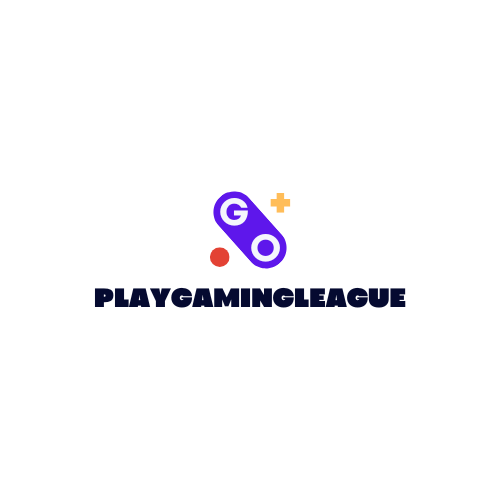
Jaizoxie Effect: Are You Overestimating Your Abilities Without Realizing It?
In the ever-evolving world of psychology, the Jaizoxie Effect stands out like a unicorn at a horse race. It’s that quirky phenomenon where our brains play tricks on us, making us believe we’re better at something than we really are. Imagine confidently strutting into a karaoke bar, convinced you’re the next pop sensation, while the audience silently wishes you’d stick to humming in the shower.
Overview of Jaizoxie Effect
The Jaizoxie Effect describes a psychological phenomenon where individuals mistakenly believe they possess greater abilities than they truly do. This can manifest in various situations, from social interactions to professional skills.
Definition of Jaizoxie Effect
The Jaizoxie Effect involves cognitive bias, where self-assessment diverges from reality. It primarily occurs when individuals focus on their strengths while ignoring weaknesses. This skewed perception can result in overconfidence, leading to decisions based on inflated self-views. Psychological studies highlight this effect’s impact on performance assessment, illustrating how it can cloud judgment in both personal and professional contexts.
Historical Context
Understanding the Jaizoxie Effect requires examining its historical roots. Research into self-perception began in the early 1970s, with psychologists investigating confidence levels in various tasks. Noteworthy studies, such as those by Dunning and Kruger, revealed a consistent trend; less competent individuals often overrate their abilities. This trend laid the groundwork for the Jaizoxie Effect, reinforcing the idea that self-awareness plays a crucial role in performance evaluation. Over the years, this phenomenon has gained recognition in educational and workplace settings, highlighting the need for accurate self-assessment.
Mechanisms Behind Jaizoxie Effect

The Jaizoxie Effect involves several underlying mechanisms that contribute to its manifestation. Key areas include biological processes and psychological impacts.
Biological Processes
Neurotransmitter activity plays a crucial role in the Jaizoxie Effect. Dopamine, linked to reward and motivation, influences perceived competence. Increased dopamine levels may distort self-perception, leading individuals to overestimate their abilities. Brain regions associated with self-evaluation, like the prefrontal cortex, also contribute to this phenomenon. These areas process both strengths and weaknesses, but often emphasize perceived strengths. Consequently, this emphasis can skew self-assessment. Genetic predispositions may further influence cognitive biases, amplifying the tendency to misjudge one’s capabilities.
Psychological Impact
Cognitive biases significantly affect individuals’ self-perception. The Dunning-Kruger effect exemplifies how those with lower ability overlook their limitations, fostering inflated confidence. Mistaken beliefs often arise when individuals assess their skills compared to others. Social influences, such as peer feedback, can also distort self-evaluation. People often seek validation from others, leading to additional misjudgments. Over time, these patterns create a deeper disconnect between self-assessment and reality. Collectively, these psychological impacts contribute to the persistence of the Jaizoxie Effect.
Studies on Jaizoxie Effect
Research on the Jaizoxie Effect reveals significant insights into self-perception and cognitive biases. These studies document the extensive impact of overestimating abilities across various contexts.
Key Research Findings
Notable research from the early 2000s highlighted that individuals with lower competency frequently overrate their skills. Dunning and Kruger found that a lack of knowledge often shapes inflated self-assessments, emphasizing self-awareness as crucial in accurately evaluating performance. Additional studies indicated that participants engaged in competitive tasks displayed higher confidence in their abilities than justified by actual outcomes. Such findings underline the disconnect between perceived and actual competence. Furthermore, research in educational settings has shown that students often overvalue their understanding of subjects, leading to poor academic decisions.
Methodologies Used
Researchers employed diverse methodologies to analyze the Jaizoxie Effect. Experimental approaches, including controlled tasks, helped measure discrepancies between self-assessment and actual performance. Surveys also captured subjective evaluations, revealing trends in confidence levels among participants. Longitudinal studies tracked changes in self-perception over time, providing insights into how confidence levels affect decision-making and behavior. Qualitative interviews offered deeper understanding of individual experiences related to self-evaluation. Collectively, these methodologies reinforced the consistency of findings concerning the Jaizoxie Effect.
Applications of Jaizoxie Effect
The Jaizoxie Effect finds relevance in various fields, illustrating its far-reaching impact on both clinical and everyday situations.
Clinical Implications
Mental health professionals often encounter the Jaizoxie Effect in therapy sessions. Patients frequently overestimate abilities, affecting self-esteem and treatment progress. With inflated self-perceptions, they become blind to weaknesses that hinder improvement. Cognitive behavioral therapy can help clients identify gaps between self-assessment and reality. Significant benefits emerge when individuals learn to recognize cognitive distortions. Therapists can utilize techniques that promote accurate self-evaluation, leading to better mental health outcomes.
Everyday Applications
In everyday settings, the Jaizoxie Effect manifests in numerous social interactions. People consistently misjudge their skills in activities such as sports and cooking, impacting their choices. Friends and family may reinforce these overestimations through uncritical praise, creating a feedback loop. Workplaces also exhibit this phenomenon, where employees overrate their competencies, which can lead to challenging project outcomes. Educational environments highlight the implications too, as students commonly misjudge their understanding of subjects. When individuals engage in self-reflection, recognizing true abilities often aids in achieving personal and professional growth.
Conclusion
The Jaizoxie Effect serves as a powerful reminder of the importance of self-awareness in assessing one’s abilities. By understanding this phenomenon, individuals can begin to bridge the gap between perceived and actual competence. The implications stretch across various fields including education, mental health, and professional environments, highlighting the necessity for accurate self-evaluation.
Encouraging self-reflection and seeking constructive feedback can mitigate the risks associated with overconfidence. As individuals become more attuned to their strengths and weaknesses, they can make informed decisions that lead to personal and professional growth. Embracing a realistic view of one’s abilities ultimately fosters better outcomes and enhances overall performance.
